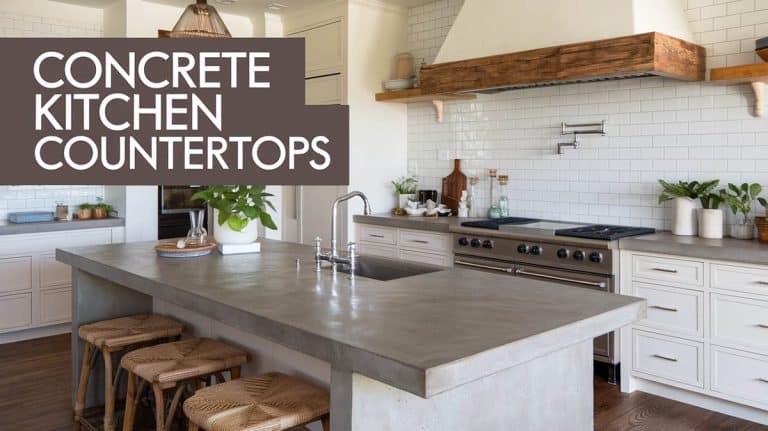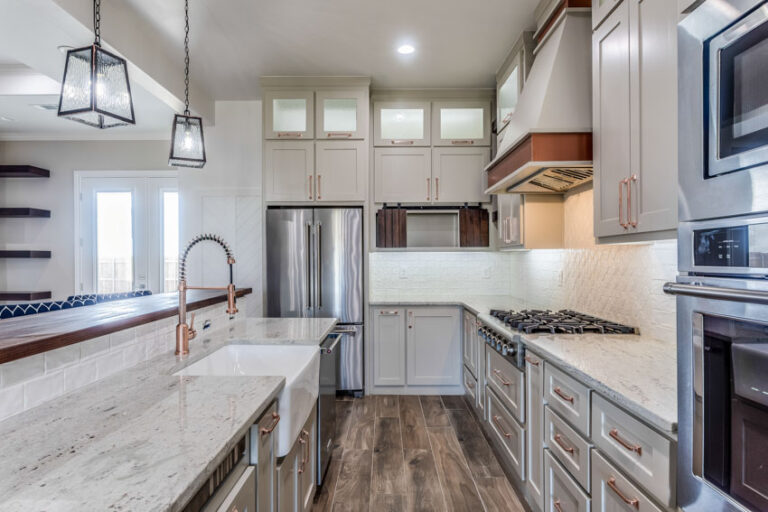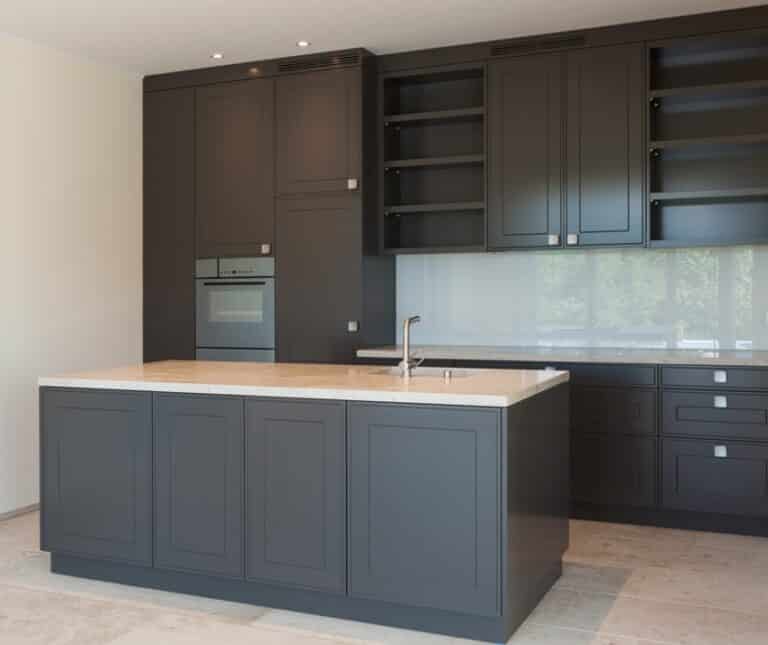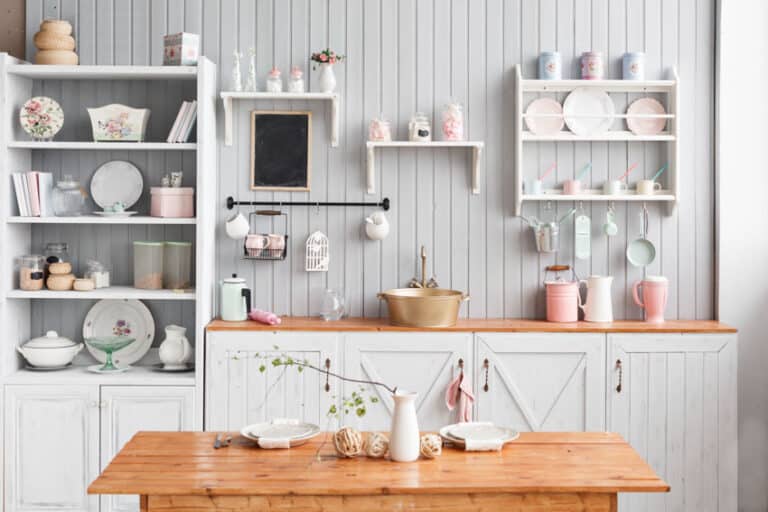Are Reclaimed Wood Countertops A Good Option For Your Kitchen?
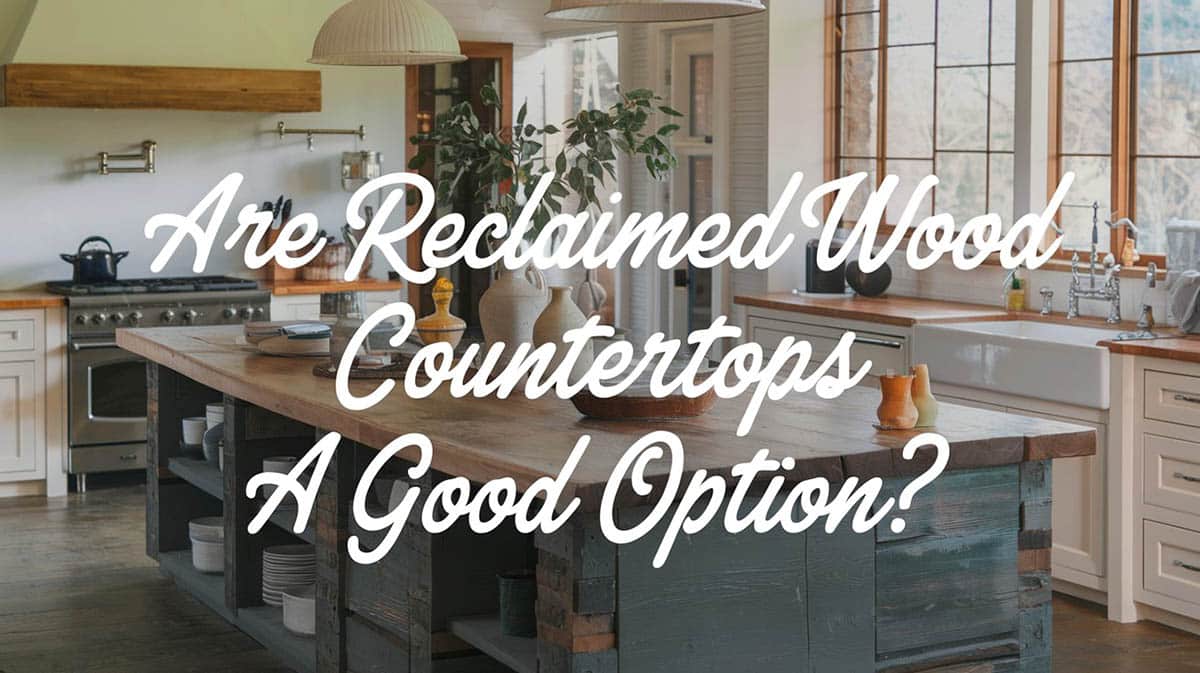
Wood countertops remain a popular option for kitchens by adding natural beauty to inside spaces. This material adds an organic and earthy feel to any style kitchen whether Old World, European, traditional, or contemporary, and presents a wide choice of species to match your interior colors. Cherry offers a light, reddish-brown color, cedar is a darker red-brown, hickory has a grayish tone, and walnut provides a rich, dark brown tone.
One choice that’s a great option, but not always considered, is using reclaimed wood for countertops. Historically, homes and buildings were built using timber available in the surrounding forest and chosen for the application whether it be a cabin, a storage building, or a factory. The abundance of this material allowed loggers to choose the best trees and varieties. A kitchen with wood countertops has always been a popular way to use this type of lumber with attractive results.
For people or business owners who couldn’t afford the premier lumber, a mixture of used materials that was available is viable. Some settlers were able to build their own sawmills and cut their lumber themselves. Next, we’ll cover what reclaimed wood is, where it’s sourced from, and how it’s used for these countertops.
What Does Reclaimed Wood Mean?
As old homes, historical buildings, and other structures are demolished, the wood is salvaged and sold as reclaimed. This gives it a second life to be repurposed to be used for furniture, flooring, decks, or anything made from lumber. It is a valuable asset to the environment as it provides an eco-friendly option for materials salvaged from tear-downs. This adds much less waste to landfills. Innovative companies, concerned about the environment, envisioned marketing reclaimed as an appealing new take on wood products.
Countertops made from this material are considered “green” and can still be recycled when they need to be replaced. Another benefit comes in the knowledge that it resided on the hull of a ship, the walls of a landmark barn, an old grange building, or even crates and railroad tracks. Distributors can sometimes let you know where the reclaimed material used for kitchen countertops came from.
Why is Reclaimed Wood Better?
Reclaimed wood is, of course, great for the environment and by choosing these countertops you’re decreasing the need for new lumber, lessening deforestation. The carbon footprint is also being decreased because the hazardous waste created from using petroleum-based plastics for countertops is greatly reduced.
It has aged in the elements, and the material itself retains its grain lines but takes on unique patterns, colors, and patina for a nature-made artistic look. The boards can be stacked for a thick countertop, and the colors and patterns can be one hue or a mixed pattern of different types of lumber to add visual appeal. See examples of a kitchen with reclaimed wood countertop with live edge.
There are species of trees no longer available for timber and lumber such as the American chestnut tree and longleaf pine. These trees are scarce and can only be found by choosing these products. Other timber such as old-growth Douglas fir was abundant 100 to 200 years ago, but difficult to find in modern-day. Finding this material, like Douglas fir can, at times, mean finding boards that are up to 12 inches wide; a dimension not typically cut by today’s lumber mills.
Is Reclaimed Wood Strong?
The strength is measured with the Janka hardness scale. This scale was created by testing each type of wood and measuring the force it took to drive a .444 inch steel ball bearing into the material, reaching half its diameter. Douglas fir is deemed hard at a Janka scale number of 660, and Brazilian cherry is considered the hardest at 2350.
This scale is important to gauge the material’s ability to resist denting and wear. When using this type of lumber for kitchen countertops, water may seem like a problem. Most manufacturers use a mixture of boiled linseed oil, wax, and catalytic driers to seal the material1.
This kitchen features a reclaimed lumber oven hood that adds some contrast to the beautiful white cabinets. Adding a small cutting board is another way to bring this style into any type of kitchen design.
With this material, whatever species it is will have a Janka hardness scale 40 points higher than new wood, due to being harvested from old-growth types. And this type is a great choice for kitchen countertops because of it being stable.
After decades of being out in the elements, the wood expanded and contracted many times and created a stable variant. This attribute also allows it to withstand the rigors of kitchen use. Maple and bamboo are frequently used for these countertops due to their durability whereas pine is a softer type and not preferred for kitchen counters.
Reclaimed Wood Countertops Cost
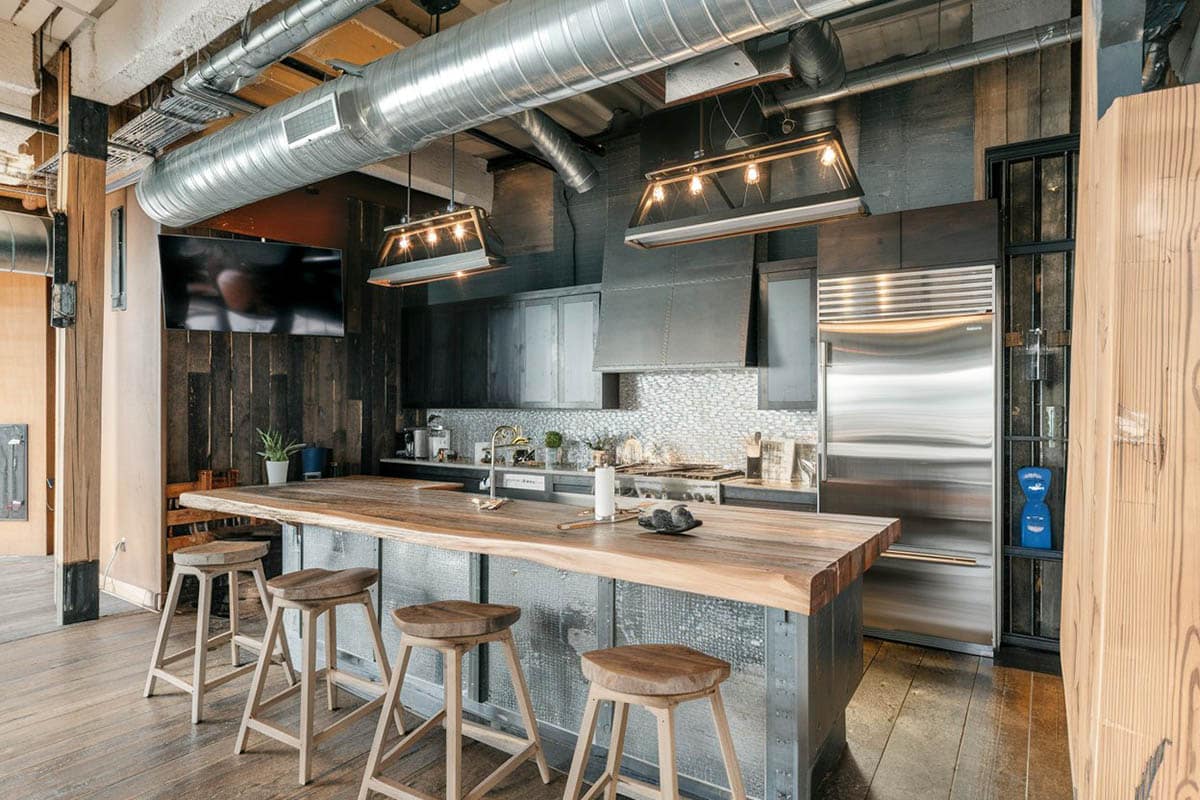
This large kitchen island with seating offers a wood waterfall countertop that complements its industrial style.
Using this material for countertops may end up being more expensive than new options because of processing old wood. Distributors and dealers sort the raw supply and check for nails, chemicals, signs of invasive pest infestations, and then they have to sort the counter materials by type of lumber. Identifying the species can be challenging after it has endured years of use, wear, and weather.
The average cost for these countertops is anywhere from $65 per square foot for lighter lumber with less detail, $85 per square foot for certain species, thicknesses, and sizes, and $125 per square foot for unique or rare lumber such as Douglas fir. Reclaimed lumber is often used for wood kitchen ceiling designs to bring in character and personality to the space.
Reclaimed Wood Pros and Cons
Pros
• It is environmentally friendly.
• The use of this material reduces chemicals and toxins from manufacturing plastic or other materials used for countertops.
• Being aged and weathered allows the used lumber to have unique and artistic colors and patterns. The character of this material for countertops ensures attractive grain patterns, lots of growth rings, and textures not found on new boards.
• Wood no longer available for lumber can be found as reclaimed and in larger sizes used many years ago.
• This countertop material has weathered storms for countless years so it’s stable and durable when used for kitchen countertops.
• It will not dull knives.
• It also works great as reclaimed lumber accent walls, oven hoods, ceilings, sliding barn doors, and flooring to bring a natural finish and old-world charm to your interior designs.
Cons
• Some distributors source fake materials to make more profit, so it’s preferred to purchase reclaimed wood from dealers with a good reputation and certifications from groups such as the Forest Stewardship Council or the Rainforest Alliance.• Some lumber may have been treated with chemicals, painted, or sprayed with insecticides. Check where the material came from and inquire about any treatments applied.
• With old-growth lumber may have pests that like to nest in old wood. This material should be inspected for asymmetrical holes or spots that crumble. Kiln drying will eliminate pests.
• Nails, metal staples, or screws may have been left in the lumber. Check for signs of inorganic matter.
We hope you enjoyed our reclaimed wood countertops guide. Please let us know in the comments what you think about this material for use in a kitchen design.

